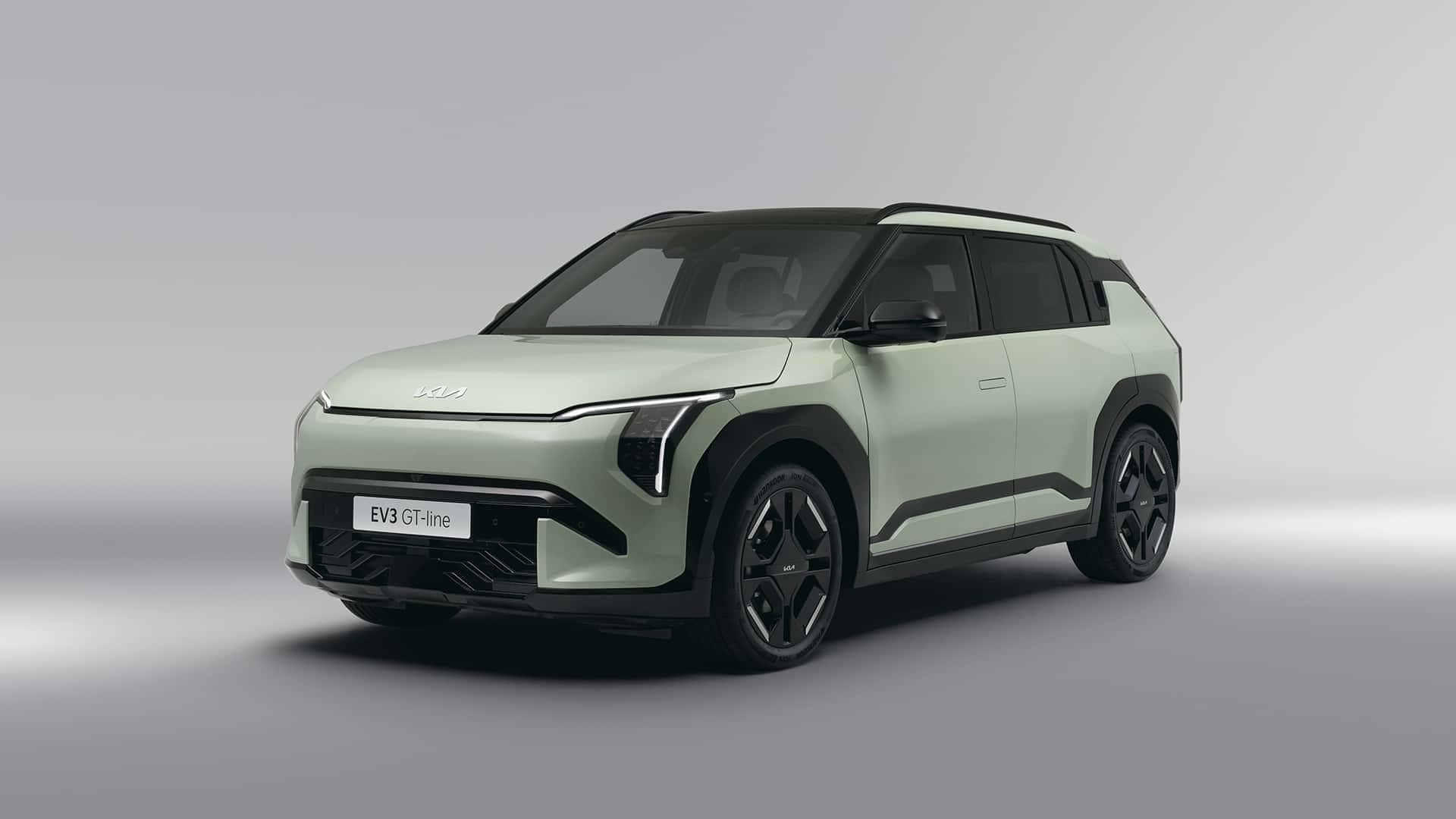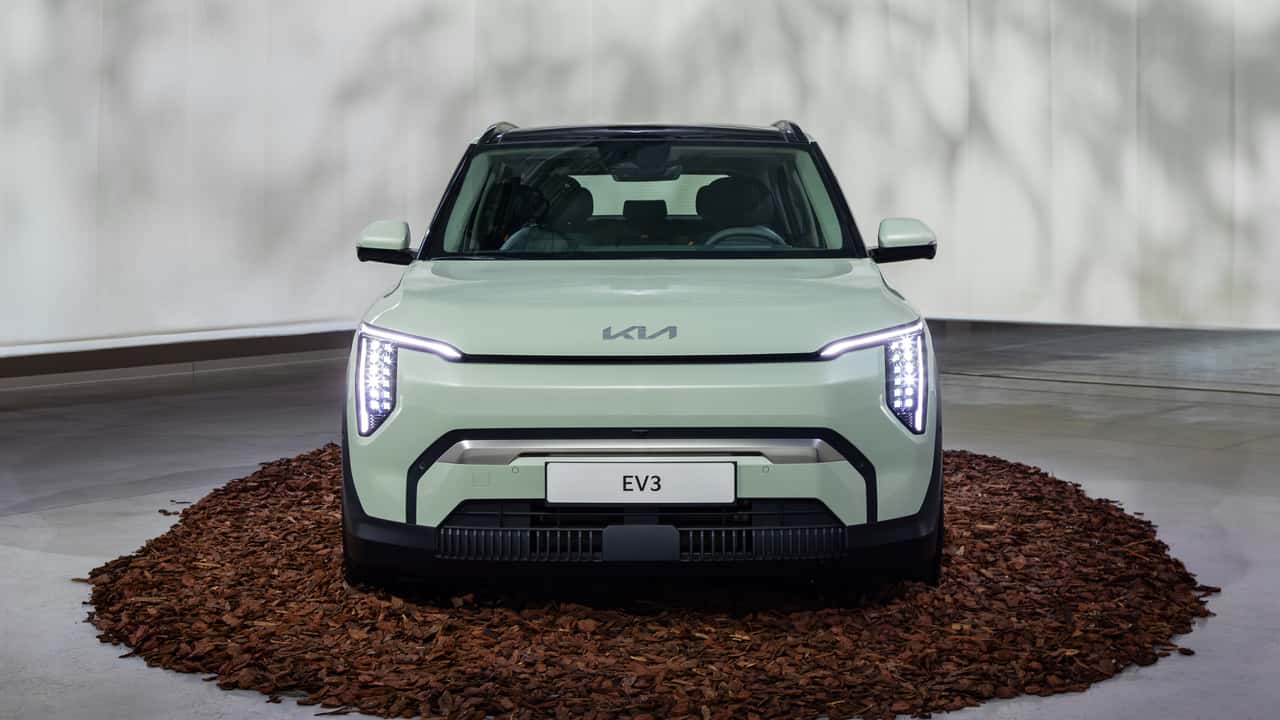All of the Hyundai Motor Group electric vehicles based on the E-GMP platform so far have been rear-wheel-drive vehicles with optional dual-motor all-wheel-drive. Now Kia is going front-wheel drive with its smaller EVs, like the EV3 and EV5, but in an age of modular skateboard EV platforms, it may not be obvious why.
Before we had EVs built on dedicated platforms, the rule was that cheap combustion cars were front-wheel drive, and power went to the back wheels only in more expensive models. Front-wheel-drive evolved as the industry standard in the 1970s and 1980s as cars got smaller and the layout provided lots of cost-savings and packaging benefits too; one bonus was that they tended to perform better in snow than RWD cars too.
But then smaller, more affordable EVs like the Volkswagen ID.4 and Tesla Model 3 brought RWD to a lower price point and made it available to many more people.
Get Fully Charged
All sub-EV6 models from Kia will be front-wheel-drive
All the Hyundai-Kia group vehicles built on E-GMP so far have been rear-wheel-drive, but now Kia is going front-wheel drive with its smaller electric offerings starting with the EV5 and all models below it in the range.
Where you put the motor in an EV has a lot less impact on the packaging of the vehicle than it does in a combustion car. You don’t need a prop shaft to send power to the other side of the vehicle, and electric motors are considerably more compact than combustion engines. So even if you put the motor in the back, you will still have enough space for a decent-sized trunk.
During a media briefing event about the EV3, Kia’s Head of Global Business Planning, Spencer Cho, explained that in this compact crossover class it’s about giving the customer what they’re most used to.
“This will be the front-wheel-drive models, which are targeted for… the affordable EVs the customers are looking for,” Cho said. He said the EV3 is initially meant as less of a “performance” vehicle than the EV6 or even EV9. “EV3 is targeting the mainstream EV buyers, so that’s why we have chosen E-GMP with front-wheel-drive, which is much lighter.”
Cho didn’t go into detail about how the weight savings were achieved, but he gave this as the only reason for the decision.
“The packaging is much lighter,” he said. “Also, the performance standpoint is right for the customers in the compact SUV category.”
Gallery: Kia EV3 2024








Cost is surely another reason, and Kia could probably save on wiring and having to run less of it to the rear of the car, as well as simplifying some of the components. Another big cost-driven change brought to smaller E-GMP-based vehicles like the EV3 is the downgrade from 800 to 400 volts, which will allow Kia to use cheaper parts than what is required for the higher-voltage application.
Switching from front- to rear-wheel drive is much easier in an EV, and FWD still has its advantages. For instance, by not having a motor under the trunk floor, the cargo compartment can be deeper, allowing you to carry taller items and increasing the overall maximum possible load volume. Small crossover buyers are all about practicality and usability, and having a bigger trunk in the back is more important than having a smaller trunk and a bit of extra storage in the frunk.
The Kia EV3 offers the best of both worlds: a roomy 460-liter (16.2 cubic-feet) trunk with a false floor that reveals additional storage space and a small 25-liter (0.8 cu-ft) frunk that looks like it might even be a bit deeper than on other E-GMP cars. Kia puts a frunk in most of its electric vehicles, even the Niro EV, which is built on a combustion car platform, so the fact that the EV3 has one isn’t surprising.
The driving dynamics of the front-wheel-drive EV3 will be quite different from those of the larger rear-wheel-drive models like the EV6, which feels surprisingly agile and sporty on a twisty road. The EV3 will have more understeer built into its suspension setup, and it probably won’t be quite as fun to drive, although the driving experience difference between front- and rear-wheel-drive EVs is not as obvious as in combustion vehicles.
Kia will offer dual-motor all-wheel, even a spicy EV3 GT, which will feel better to drive and provide a lot more performance. Having the second motor in the rear will limit the underfloor space in the trunk, but having more than double the power of the base model will more than make up for it.
The Kia EV3, an electric vehicle from the South Korean automaker Kia, has been making waves in the automotive industry for its innovative design and eco-friendly features. One question that many consumers have raised is why the Kia EV3 is front-wheel drive, as opposed to rear-wheel drive or all-wheel drive like some other electric vehicles on the market.
There are several reasons why Kia has opted for a front-wheel drive system in the EV3. One of the main reasons is cost efficiency. Front-wheel drive systems are generally less expensive to manufacture than rear-wheel drive or all-wheel drive systems. This allows Kia to offer the EV3 at a more affordable price point, making it more accessible to a wider range of consumers.
Another reason for choosing front-wheel drive is the packaging of the electric components in the EV3. Front-wheel drive systems are more compact and take up less space in the vehicle, which is important in an electric vehicle where space is at a premium. By using a front-wheel drive system, Kia is able to maximize interior space and create a more practical and functional vehicle for consumers.
Furthermore, front-wheel drive systems are known for their stability and traction control, especially in adverse weather conditions. By utilizing front-wheel drive in the EV3, Kia is able to provide drivers with a safe and reliable driving experience in all types of road conditions.
Overall, the decision to make the Kia EV3 front-wheel drive was a strategic one that takes into account cost efficiency, packaging constraints, and driving performance. While rear-wheel drive and all-wheel drive systems have their own advantages, front-wheel drive was the best choice for the EV3 to deliver a well-rounded electric vehicle that is both practical and efficient.

